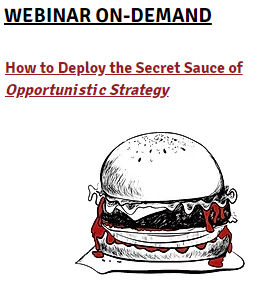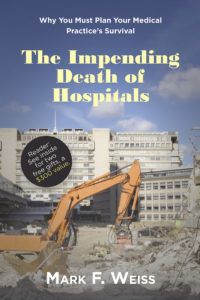Frédéric Bastiat, the early 19th Century French political economist, is perhaps most known for his essay, That Which is Seen and That Which is Not Seen.
Bastiat’s point was that politicians legislate to correct a problem (and then bask in the glory of having taken action) but never truly consider what problems they create when they enacted the legislation to correct the initial problem. That is, they act based on what is seen (the initial “problem” and the easily seen “solution”) but do not pause to consider the unseen, potential damage that their action will later cause.
In part, we can blame this on the short lifespan of term of office. “I’ll be out of office and retired in the Bahamas before the shit hits the fan.” In part, we can blame this on the immunity from liability for negligence that we’ve given politicians and bureaucrats. I’ve heard, but can’t find any proof, that the Romans made bridge builders and their families live under their bridges for an extended period of time, the ultimate test of quality construction. We don’t impose any risk at all on politicians who impose harebrained schemes on us.
Here are two recent examples from the healthcare world, both of which are instructive.
The first, drawn from a Wall Street Journal Op Ed, points out that Hawaii’s extremely high state income taxes combined with certificate of need laws have resulted in the fewest hospital beds per capita of any state, the 10th longest emergency room wait times, and a severe doctor shortage.
You’d think that the politicians in Hawaii would have at least consulted with the politicians in California who could have told them (sotto voce, I am sure), that sucking the financial lifeblood out of productive people, even in a relative paradise, isn’t good for keeping them in the state or attracting them in the first place. CONs, too, are great in terms of political contributions, but not so hot in reducing the cost of healthcare and of, well, actually delivering care.
The second, drawn from the bureaucrats at the Department of Justice with an assist from the bureaucrats at CMS (based on the work of the now deceased Congressman, Fortney “Pete” Stark, who later regretted his own Frankenstein monster, the so-called “Stark Law”) concerns the $18.2 million settlement of False Claims Act allegations that a partially physician-owned hospital, Flower Mound Hospital Partners, LLC d/b/a Texas Health Presbyterian Hospital Flower Mound, impermissibly took into account the volume or value of certain physicians’ referrals when it (1) selected the physicians to whom shares [repurchased from other physicians] would be resold and (2) determined the number of shares each physician would receive.
Yes, it is true that taking into account the volume or value of referrals knocks an arrangement out of Stark’s mandatory safe harbor and supports kickback allegations under the federal Anti-Kickback Statute. I’m not in any way suggesting that you ignore this fact.
However, trying to recruit physicians into a deal without some reference to whether they will use the facility is a fool’s errand because at what point do you draw the line? Although Stark rarely applies in the ASC context (and then, only in relation to services that are not reimbursed under the ASC fee schedule), the same analysis (and the AKS) applies to selecting physician investors in those facilities as well.
Must the facility offer every investor the same percentage? But why even offer the interests to those docs–it could be seen by Agent Such N. Such or whistleblower Pete to be influenced by referrals–so why not require a lottery? And, why just among docs? Why not include massage therapists, because they (probably) won’t refer.
A broke and soon to be bankrupt hospital or ASC (as well as one that was never built), is compliant, it’s just not of much use to the patients who will soon find that it’s being converted into a Holiday Inn or a veterinary clinic. Think about it: not one cent was actually overpaid to the facility by the government. Not one actual bribe, as the term was used for hundreds of years, was involved.
Each week I speak with physicians and with healthcare investors who are no longer participating in any government reimbursement program. Some refuse to take even private payer reimbursement – it’s patient self-pay or no service. They’ve had it.
For those quick to write me hate email, I am, once again(!), not suggesting that you break the law. I am warning you that you need to be very careful in structuring deals that implicate, or even might implicate, Stark or the AKS. What I am suggesting is that the law is, in this context and to this extent, an ass.
Despite all the talk about, as in the FCA settlement, “protecting our warfighters” [not an issue in the case] (that’s the Department of Defense Office of Inspector General, Defense Criminal Investigative Service spokesperson) and of delivering and billing “for services based on their medical appropriateness and necessity, not their potential profitability” [not an issue in the case] (that’s the Department of Health and Human Services Office of Inspector General spokesperson), and the involvement of the DOJ’s Civil Division, and its Commercial Litigation Branch, and its Fraud Section, and the U.S. Attorney’s Office for the Northern District of Texas, no one offered a quote about protecting taxpayers from the cost of duplicative silos of investigative and prosecutorial bureaucracies, and of the cost in terms of morbidity and mortality from reducing the availability of healthcare.
After all, that’s the unseen damage that they will cause.





